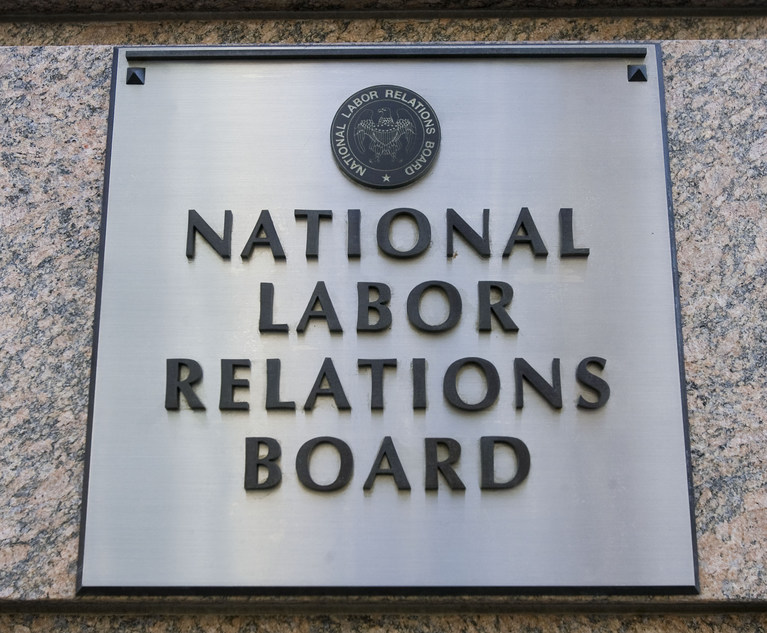What the NLRB Decision Means

Harold Meyerson on the exceedingly significant recent NLRB decision:
Last Friday, the National Labor Relations Board released its most important ruling in many decades. In a party-line decision in Cemex Construction Materials Pacific, LLC, the Board ruled that when a majority of a company’s employees file union affiliation cards, the employer can either voluntarily recognize their union or, if not, ask the Board to run a union recognition election. If, in the run-up to or during that election, the employer commits an unfair labor practice, such as illegally firing pro-union workers (which has become routine in nearly every such election over the past 40 years, as the penalties have been negligible), the Board will order the employer to recognize the union and enter forthwith into bargaining.
The Cemex decision was preceded by another, one day earlier, in which the Board, also along party lines, set out rules for representation elections which required them to be held promptly after the Board had been asked to conduct them, curtailing employers’ ability to delay them, often indefinitely.
Taken together, this one-two punch effectively makes union organizing possible again, after decades in which unpunished employer illegality was the most decisive factor in reducing the nation’s rate of private-sector unionization from roughly 35 percent to the bare 6 percent at which it stands today.
In the Board’s press release outlining its 121-page decision in Cemex, it explained:
… the revised framework represents an effort to better effectuate employees’ right to bargain through their chosen representative, while acknowledging that employers have the option to invoke the statutory provision allowing them to pursue a Board election. When employers pursue this option, the new standard will promote a fair election environment by more effectively disincentivizing employers from committing unfair labor practices.
“This is a sea change, a home run for workers,” said Brian Petruska, an attorney for the Laborers Union who authored a 2017 law review article on how to effectively restore to workers their right to collective bargaining enshrined in the 1935 National Labor Relations Act, which was all but nullified by the act’s weakening over the past half-century. Taken together, Petruska added, last week’s decisions recreate “a system with no tolerance for employers’ coercion of their employees” when their employees seek their legal right to collective bargaining.
Petruska’s 2017 article explained how an attorney’s misstatement in a 1969 case before the Supreme Court (NLRB v. Gissel Packing Co.) led to the abandonment of a previous Board ruling in the case of Joy Silk Mills, which had required employers to recognize their workers’ union and enter into bargaining if they’d refused to recognize the union after a majority of workers had voted for affiliation. The article didn’t draw wide notice; at least, until President Biden’s appointee as the NLRB’s general counsel, Jennifer Abruzzo, sent out her initial memo to the 500 NLRB attorneys across the country whom she supervised. In the memo, Abruzzo laid out the kind of cases those attorneys could pursue, and suggested that they consider cases based on the long-forgotten Joy Silk standard, which she viewed as erroneously discarded, with demonstrably catastrophic consequences for workers’ right to unionize and bargain.
The problem, as always, is that these decisions remain completely dependent on Democrats controlling the White House. But unions can take advantage of this moment to build more power. Let’s see if they can do so.
There’s an additional problem, as Meyerson points out:
One reason that these two landmark decisions came down last week was that the term of one of the three Biden appointees to the Board, Gwynne Wilcox, is about to run out. Board terms normally last for five years, but Wilcox was appointed for just two years to fill out the balance of the term of a member who had retired early. Once she’s off the Board, there will be just three members, since one of the Board’s Republican seats has now been vacant for nearly a year. (By mutual consent, the Board is composed of three members from the president’s party and two from the opposition.) And when it has only three members, the Board is forbidden from making decisions that change its rules.
The normal procedure for filling seats on the Board (like with many multimember commissions) is that an appointee from one party comes before the Senate for confirmation in tandem with an appointee from the other party. However, hoping to thwart the now Biden-dominated Board from making decisions like those of last week, the Republicans, backed by the U.S. Chamber of Commerce, have declined to put forth a nominee to fill the vacant Republican seat, plainly hoping that Democrats would adhere to the custom of not bringing up an unaccompanied Biden appointee for a vote. More precisely, they’ve wagered that the anti-worker duo of Sens. Manchin and Sinema would deny that nominee the 51st vote required for confirmation, using the fig leaf of the absence of a Republican nominee to justify their opposition.
The White House renominated Wilcox for a five-year term some time ago, and Bernie Sanders’s Senate Labor Committee has sent her nomination to the floor, with all the committee Democrats plus Alaska Republican Lisa Murkowski voting to do so. For whatever reason, however, both the Biden administration and Democratic Senate Majority Leader Chuck Schumer have put the floor vote on hold, perhaps in the vain hope that Senate Republicans will put forth their nominee, which Republicans have made obvious that they have no intention of doing. As a result, the Board is about to go down to three members, and become effectively inert.
Hence, the timing of last week’s one-two punch on the eve of Wilcox’s departure, even if just temporary. It will require the vote of any one of Manchin, Sinema, or Murkowski to restore the Board to its rulemaking authority.
Well there’s three senators I trust to do the right thing!


